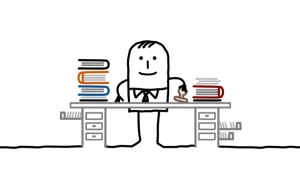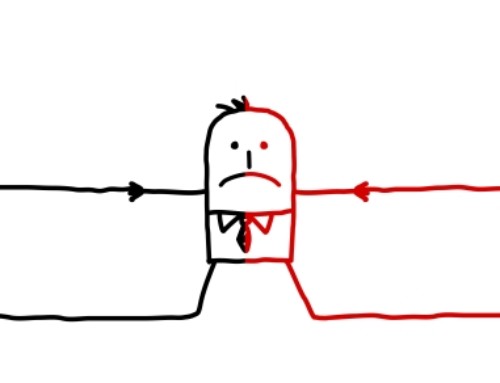In this article, I discuss how I dealt with an unexpected significant stressor by using the strategies which I teach to my clients.
Estimated reading time: 7 minutes.
For the last several years, I have written and posted a blog article every two weeks without interruption. That streak came to an end last Sunday when I did not write or post an article. The reason for my not writing or posting is the focus of this article.
On the morning of Thursday, September 8th I realized that the computer which I used to write and post blog articles was not working. This realization and the many events which ensued created significant stress for me. And although I would have preferred that I did not have to face the adversity associated with these events, it gave me an opportunity to apply the strategies for dealing with stress which I teach to my clients.
Given that I am now experiencing the relief of having emerged from this challenging series of events by having successfully applied these strategies, I thought it would be both cathartic and educational to discuss how I used these strategies.
A double-barreled approach to managing stress
I used a double-barreled approach to managing stress in dealing with my computer issue which consisted of a combination of problem-focused coping and self-focused coping. Problem-focused coping entails taking steps to address the problem. Self-focused coping involves using skills and activities to manage your emotions while you are engaged in problem-focused coping.
I use this approach to manage stress on a regular basis. It has also served me well when dealing with unexpected large stressors like the one I was faced with on this occasion. A notable example was when my bank account and credit card account were hacked into several years ago. Like my recent computer issues, that stressor was very disruptive to my daily routine, caused a significant amount of stress and could not be resolved quickly. I reasoned that if the two-pronged stress management approach got me through that episode it could serve me well in facing this one.
Problem-focused coping: Taking steps to address the problem
Using problem-focused coping in this situation entailed taking several steps to deal with my computer issue. The first step was taking my computer to a repair shop to have the issue diagnosed and hopefully then fixed. I immediately received some bad news—the computer did not boot up and a message indicated that there was a problem with its hard drive. I left my machine at the shop overnight as the nature of the hard drive issue, and whether it could be fixed, was determined.
The following day, I received more bad news regarding my computer. The hard drive needed to be replaced. If that wasn’t bad enough news, there was more. I was told that the files which I had stored on the hard drive were inaccessible. I was referred to a business specializing in data recovery if I chose to attempt a ‘Hail Mary Pass’ to save my data. I told myself that I would cross that bridge when I came to it. In the meantime, my priority was to get my computer working again. I therefore left it at the repair shop for yet another day so that a new hard drive could be installed.
As the saying goes, the plot thickened when I got my computer back with a new hard drive. I tried booting it up at home and nothing appeared on the screen. This led me to return to the computer repair shop to find out why the machine was not booting up. At this point, the repair shop worker successfully booted it up. This led me to realize that I also had a defective computer monitor and was told that the shop could not fix this issue.
I had considered at this point buying a new monitor and using the newly installed hard drive to accompany it. However, I instead decided to buy a new computer as well even though I had just spent a fair amount of money having the new hard drive installed on my old device. One reason I opted for this action was that it had been several years since I had bought a new computer. A second reason was that, if I were able to save my files from the old hard drive, it would be just as easy to have them installed on a new computer compared with one which I already owned.
So, my next steps in problem-focused coping were to buy a new computer and monitor and take my old hard drive to the data recovery specialists to determine if my files could be salvaged. On the latter front, the good news I received was that all my data was able to be saved (albeit at a substantial price). I was given my data on an external drive which I could plug into my new computer. I would then be able to transfer the files to my new device by following a series of steps.
Buying a new computer and monitor was very straightforward and quick and the price for each was reasonable. Assembling both devices and booting up so that I could begin using my device was not so easy, but I managed to do it.
There remained the task of transferring my saved files from the external drive onto my new computer. This process initially appeared to be challenging but I eventually got the hang of it. I proceeded to transfer the files which I needed to work with immediately and planned to transfer less urgent material over time.
Finally, I had to reinstall various programs because these could not be recovered with my files. Among those programs needing to be reinstalled were for my printer, my antivirus program and my word processing software. Given that my most recent word processing software was becoming dated, I bit the bullet and purchased a new package.
With all these steps having been taken, I then proceeded to catch up on various tasks which had been interrupted by my computer issues including writing blog articles for my website. It took almost a week of several problem-focused coping steps but executing them over that period accomplished the mission of addressing the problem which had caused me undue stress.
Taking those problem-focused coping steps in a relatively calm and deliberate manner was aided by my having used self-focused coping strategies to manage my emotions during this challenging period. I will discuss these strategies in the next section.

Self-focused coping: Using skills and activities to manage emotions while addressing the problem
My self-focused coping strategies were of three kinds: (1) Behavioural–This entailed engaging in behaviours and activities to give myself a break from focusing on the problem; (2) Physical–This form of coping focused on calming the tension in my body and replacing it with relaxation; (3) Cognitive–This entailed identifying negatively skewed thoughts about my situation and replacing them with more accurate and less negative thoughts.
Behavioural self-focused coping activities included physical exercise (mainly swimming and biking), practicing piano and attending my weekly piano lesson, social interaction with family and friends, and various other enjoyable activities such as reading and watching sports on television. Although I was skeptical that I would be able to take my mind off the problem by engaging in these activities, for the most part I was successful in doing so. The result was that I did not dwell on the problem continuously and I felt ‘emotionally recharged’ when I needed to engage in problem-focused coping.
Physical self-focused coping to calm my body was comprised of the aforementioned physical exercise and relaxed breathing. I did the latter form of physical self-focusing coping at times when I needed to calm my body in the moment such as when I was dealing with adversity while trying to address the problem. I used the ‘centering breaths’ technique described by sports psychology consultant Jason Selk in his book 10-Minute Toughness.
It entails inhaling for six seconds, holding for two more seconds and then slowly exhaling for an additional seven seconds. The calm in my body which I felt from using this technique in tandem with regular cardiovascular exercise made it easier for me to keep my composure during this challenging period.
Cognitive self-focused coping entailed identifying negatively skewed thoughts about my situation and replacing them with more accurate and less negative thoughts. In such a stressful situation, it is common to overestimate the likelihood of negative events occurring and underestimate one’s ability to cope with such events.
By critically examining the information which was available to me and taking steps to address the problem, I was able think in a more balanced way about my situation. In effect, I concluded that, although I would have to deal with various forms of adversity related to my computer issues, I would ultimately be able to cope with them. Thinking in this balanced way helped me to keep my emotions at a manageable level of intensity until I had addressed the problem.
Lessons I learned during a week from hell
At times, we all encounter unexpected stressful events of a large magnitude with which we have to cope. This past week, it was my turn to face this kind of music. And although I would rather not go through episodes like this for the foreseeable future, I can view my recent computer problems in a beneficial manner in the form of lessons which I learned.
I first learned that, although it is preferable to anticipate and prepare for how to cope with stressful events, it is comforting to know that I can cope with significant stressors for which I had not prepared a plan of action. Secondly, I learned that the double-barreled stress management approach comprised of problem-focused coping and self-focused coping is effective when it is applied to these situations. And finally, I learned that I need to do a better job of taking steps to avoid such significant stressors. In this scenario, having taken steps to back up my files would have made dealing my computer issue more manageable from a stress management perspective.
I hope this article was helpful to you in dealing with unexpected stressful events which you encounter.
May you follow a stress management game plan in dealing with adversity,
Dr. Pat






Leave A Comment